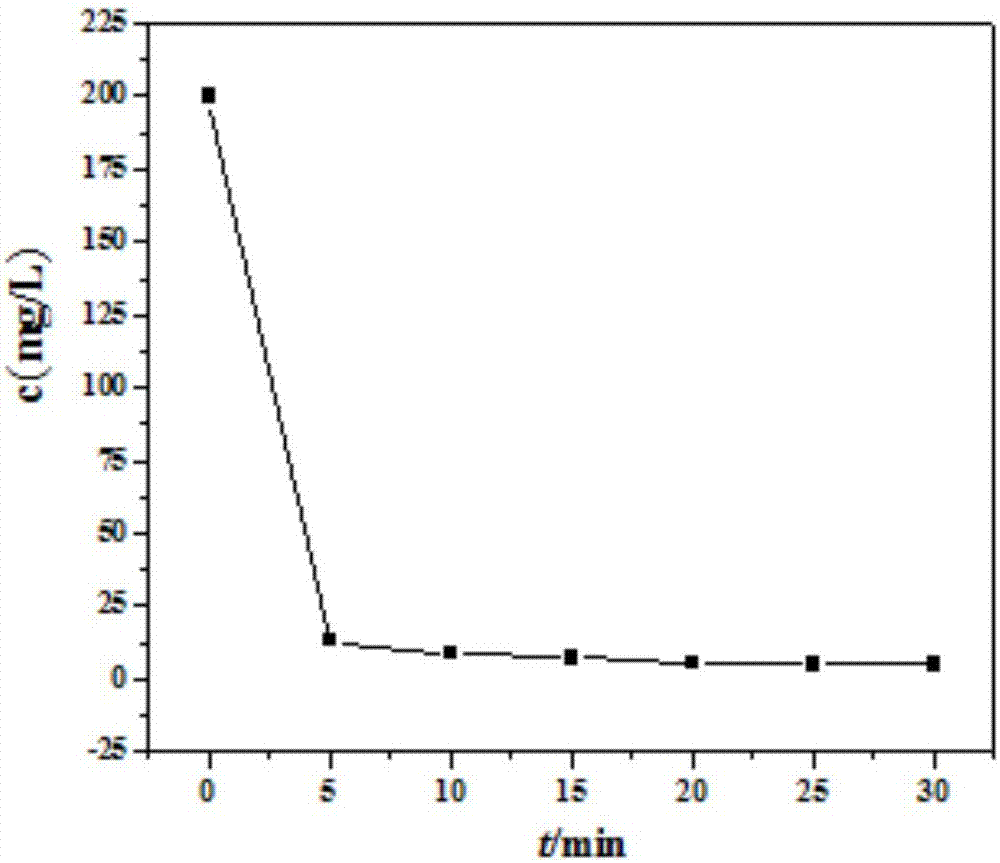Application of waste concrete to fluorine removal in water
A technology for waste concrete and water body, applied in the field of waste resource utilization, can solve the problems of high defluorination cost and secondary pollution, and achieve the effects of stable defluorination effect, high utilization efficiency and wide source.
- Summary
- Abstract
- Description
- Claims
- Application Information
AI Technical Summary
Problems solved by technology
Method used
Image
Examples
Embodiment 1
[0036] To use waste concrete to treat fluoride-containing wastewater, first use waste concrete to prepare water body defluoridation agent, the steps are as follows:
[0037] (1) Select waste concrete from construction waste, and use a small hammer crusher for primary crushing, use a square hole sieve to control the particle size of the waste concrete after primary crushing d≤10mm, and put the waste concrete after primary crushing into a muffle furnace Low-temperature pre-calcination is carried out to weaken the bond strength between the aggregate and cement stone in the waste concrete. The specific calcination conditions are: heating up to 200°C at a rate of 6°C / min, keeping the temperature for 20 minutes and then cooling naturally to 25°C.
[0038](2) Vibrate the calcined waste concrete in an electromagnetic vibrating pulverizer to separate the coarse aggregate from the waste cement stone, and put the separated cement stone into a ball mill for grinding to further increase its...
Embodiment 2
[0042] First use waste concrete to prepare water body defluoridation agent, the steps are as follows:
[0043] (1) Select waste concrete from construction waste, and use a small hammer crusher for primary crushing, use a square hole sieve to control the particle size of the waste concrete after primary crushing d≤10mm, and put the waste concrete after primary crushing into a muffle furnace Low-temperature pre-calcination is carried out to weaken the bond strength between the aggregate and cement stone in the waste concrete. The specific calcination conditions are: heating up to 400°C at a rate of 8°C / min, keeping the temperature for 20 minutes and then cooling naturally to 20°C.
[0044] (2) Vibrate the calcined waste concrete in an electromagnetic vibrating pulverizer to separate the coarse aggregate from the waste cement stone, and put the separated cement stone into a ball mill for grinding to further increase its microstructure defects , to increase its specific surface ar...
PUM
 Login to View More
Login to View More Abstract
Description
Claims
Application Information
 Login to View More
Login to View More - R&D Engineer
- R&D Manager
- IP Professional
- Industry Leading Data Capabilities
- Powerful AI technology
- Patent DNA Extraction
Browse by: Latest US Patents, China's latest patents, Technical Efficacy Thesaurus, Application Domain, Technology Topic, Popular Technical Reports.
© 2024 PatSnap. All rights reserved.Legal|Privacy policy|Modern Slavery Act Transparency Statement|Sitemap|About US| Contact US: help@patsnap.com










